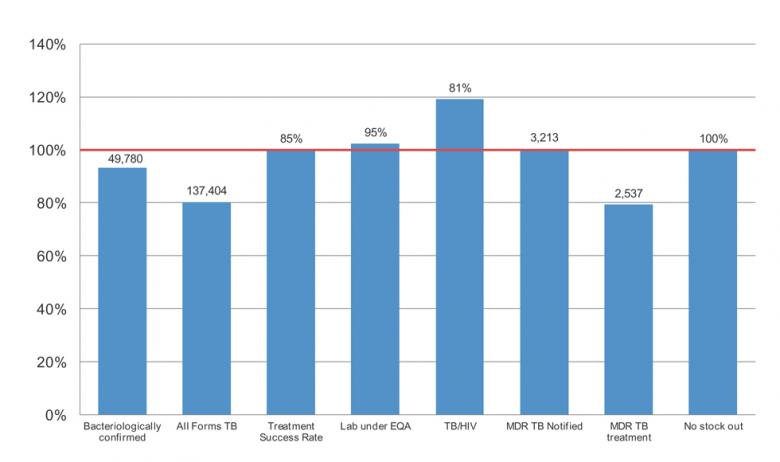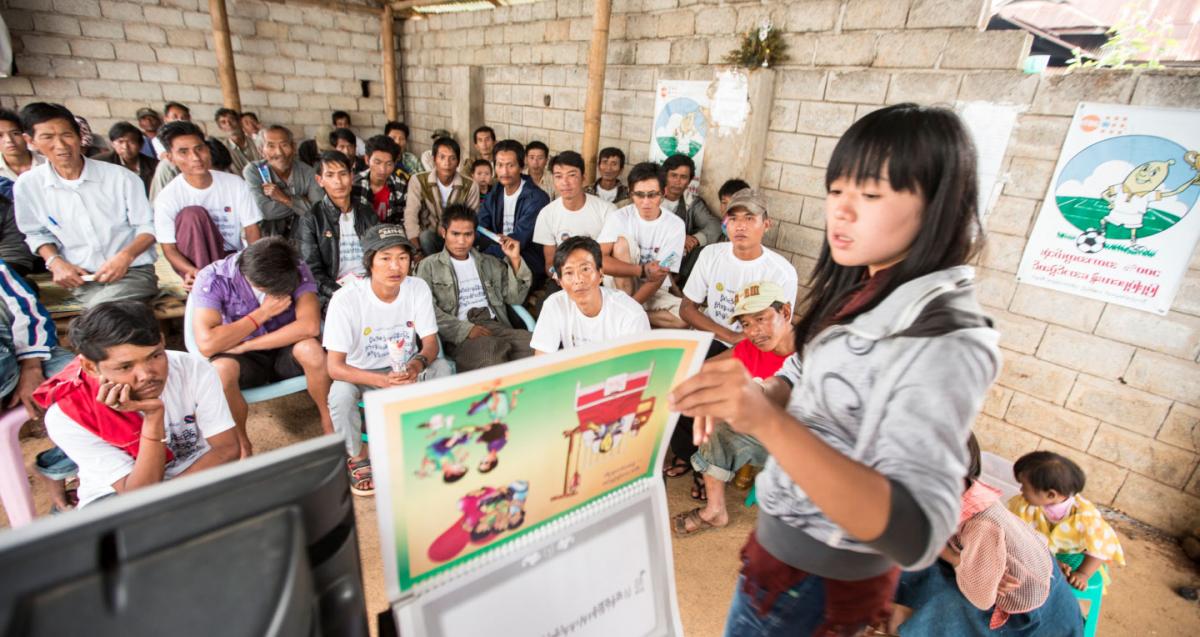
The cumulative results for Year 6 (NFM) are shown as a percentage of the annual target. TB–HIV indicator (collaborative sites) and MDR-TB treatment indicators are funded by GFATM and other donors, while the others are funded by GFATM only.
TB grant implementation has also shown progress, with five out of eight reportable indicators either meeting or exceeding the annual targets.
During the year, 137,404 (80% of the annual target) TB patients were notified and enrolled on treatment of which 49,780 (93%) were bacteriologically confirmed. The treatment success rate was 85 per cent.
To increase case notification, coordination has been increased with other service providers such as military hospitals, public and private hospitals, and non-governmental organizations working in border areas with the involvement of ethnic minority health workers.
To increase identification of hidden TB cases, mobile active case finding activities have been expanded among groups including prisoners, industrial workers, miners, migrant workers and people who inject drugs.
External quality assurance samples (quality control slides) from 443 of the 450 participating laboratories were sent for assessment and 419 of the 443 laboratories, or 95 per cent, (102% of target) met the quality control performance criteria.
Training and mentoring of upper and lower Myanmar TB laboratories, technical assistance and supportive supervision from WHO were crucial in achieving this result. Refresher training and close supervision is usually provided to the low performance townships.
In 2016, 3,213 (100%) multi-drug resistant (MDR-TB) cases were notified. Advocacy meetings were held and refresher training conducted on the new algorithm of the TB treatment guidelines. As a result, the programme was able to identify more cases than in the previous year. During the year, 2,537 (79% of target) MDR-TB patients were put on second-line treatment.
Over the year, the HIV test results of 81 per cent (111,207) of notified TB cases were recorded in the TB register, significantly exceeding the programmatic target of 68 per cent.
In 2016, all reporting units reported no stockout of first-line anti-TB drugs.


